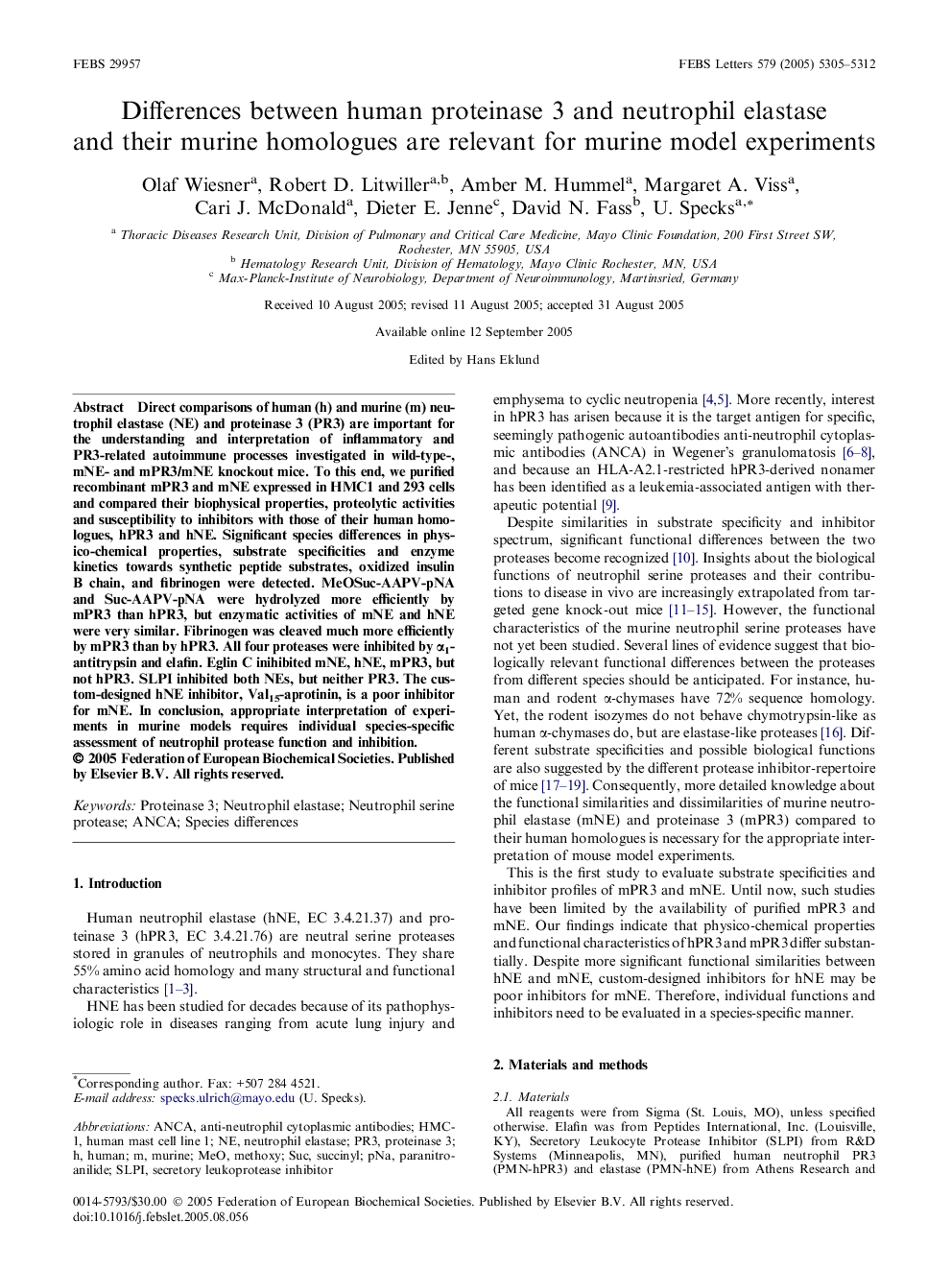| Article ID | Journal | Published Year | Pages | File Type |
|---|---|---|---|---|
| 2053091 | FEBS Letters | 2005 | 8 Pages |
Direct comparisons of human (h) and murine (m) neutrophil elastase (NE) and proteinase 3 (PR3) are important for the understanding and interpretation of inflammatory and PR3-related autoimmune processes investigated in wild-type-, mNE- and mPR3/mNE knockout mice. To this end, we purified recombinant mPR3 and mNE expressed in HMC1 and 293 cells and compared their biophysical properties, proteolytic activities and susceptibility to inhibitors with those of their human homologues, hPR3 and hNE. Significant species differences in physico-chemical properties, substrate specificities and enzyme kinetics towards synthetic peptide substrates, oxidized insulin B chain, and fibrinogen were detected. MeOSuc-AAPV-pNA and Suc-AAPV-pNA were hydrolyzed more efficiently by mPR3 than hPR3, but enzymatic activities of mNE and hNE were very similar. Fibrinogen was cleaved much more efficiently by mPR3 than by hPR3. All four proteases were inhibited by α1-antitrypsin and elafin. Eglin C inihibited mNE, hNE, mPR3, but not hPR3. SLPI inhibited both NEs, but neither PR3. The custom-designed hNE inhibitor, Val15-aprotinin, is a poor inhibitor for mNE. In conclusion, appropriate interpretation of experiments in murine models requires individual species-specific assessment of neutrophil protease function and inhibition.
